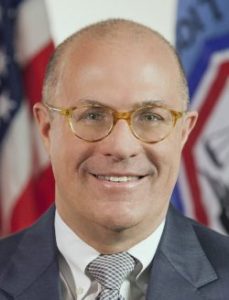Chris Giancarlo was the CFTC Chair until April 2019; he’s currently a senior counsel at Wilkie, Farr, and Gallagher, a prominent law firm with offices in six countries spoke about digital currency.

At the end of June, he testified as a witness at a hearing of the Senate Committee on Banking, Housing, and Urban Affairs, also known as the Senate Banking Committee, in a hearing entitled, “The Digitization of Money and Payments.”
In his opening remarks, Giancarlo threw his support behind what is being called the Central Bank Digital Currency (CBDC), making the dollar digitized.
“This type of CBDC would increase financial inclusion by broadening access to services through digital wallets on smart phones. It would enable the sending of COVID relief immediately to underbanked populations and expand their ability to access financial services.
“This type of digital dollar is about more than financial inclusion. It is about basic financial architecture. Today, most of the world’s tradeable commodities, benchmarks, and contracts are priced in US dollars. Tomorrow, they will be digitized, tokenized, and coupled with smart contracts.”
Giancarlo said digitizing of the dollar, “must be done thoughtfully, carefully, and deliberately.”
A white paper done by the Bank of International Settlements, noted that among other things, CBDC has the potential to be, “a new form of digital central bank money that can be distinguished from reserves or settlement balances held by commercial banks at central banks. There are various design choices for a CBDC, including: access (widely vs restricted); degree of anonymity (ranging from complete to none); operational availability (ranging from current opening hours to 24 hours a day and seven days a week); and interest bearing characteristics (yes or no).”
Giancarlo was not the only witness to get behind a CBDC.
Charles Cascarilla is the Chief Executive Officer (CEO) and Co-Founder of Paxos, which has created a popular stablecoin.
Stablecoins are digital currencies which are pegged to stable assets like gold or the US Dollar.

In his opening remarks, Cascarilla also backed the US developing a CBDC.
“A well-constructed US CBDC will support our pre-eminent economic position and the Dollar reserve currency status,” Cascarilla stated. “A CBDC would upgrade our financial infrastructure, increase inclusion, and reinforce our values and the position of the Dollar.”
There was also skepticism over making a CBDC.
The skepticism was led by Sherrod Brown, a Democratic Senator from the State of Ohio.
“Big tech have made a lot of promises about the better societies they were going to build, and they have not lived up to any of them,” Brown began.
He continued.
“These fintech firms claim that low paid workers and communities of color stand to benefit the most from their innovation, but even with all the fintech hype over the last decade, it’s hard to think of any revolutionary products or services that have actually helped the people that they say it will.
“Marketplace lending, small dollar credit underwriting promised affordable and abundant credit, but if you look at the punishing terms that come with these products, they’re just payday lenders with a website or an app.
“We heard all kinds of promises about how crypto-currencies like Bitcoin or Ethereum would fundamentally change our relationship with the banking system. Workers should be able to efficiently and cheaply transfer money, make on-line payments, buy groceries, all without a bank account, but that’s not what happened, Bitcoin is primarily used by wealthy investors.”









